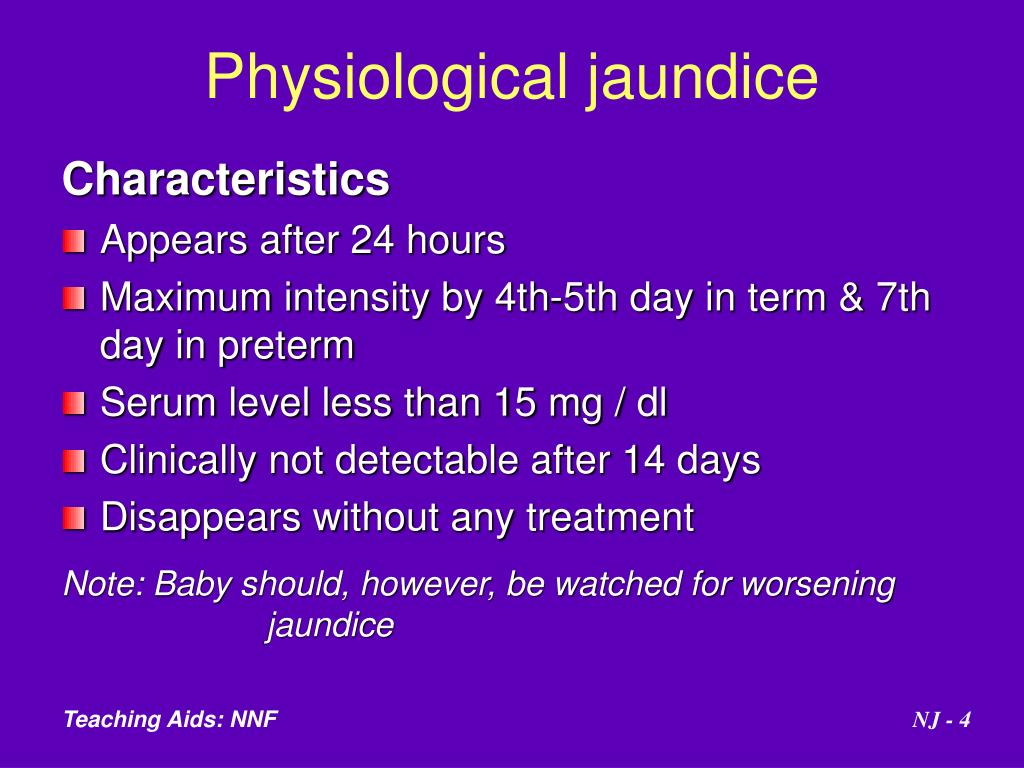

It takes several days or weeks (even longer in preterm babies) before a newborn’s liver functions fully. The liver filters bilirubin from the blood and excretes it in stool. After birth, these extra cells break down, releasing a substance called bilirubin. When babies are inside the uterus they need extra red blood cells to meet their oxygen needs. Newborn jaundice is usually mild and seldom requires treatment, but it does require evaluation and follow-up with your baby’s health care provider. Although jaundice sounds scary, in most cases it is simply a sign that your baby is adjusting to life outside the uterus.
#Bilirubin levels in pathological jaundice skin
You will know your baby has jaundice if his skin and the whites of his eyes appear yellow, although a blood test can reveal just how jaundiced he is. doi: 10.1002/lt.24640.Jaundice is a common newborn condition, affecting about 60 percent of full-term infants and 80 percent of preterm infants in the first week of life. Biliary atresia: Indications and timing of liver transplantation and optimization of pretransplant care.

A thorough history and physical examination are vital in assessing a neonate with hyperbilirubinaemia.On follow-up review, her jaundice had resolved, and her weight gain improved.
#Bilirubin levels in pathological jaundice full
Initially she required partial parenteral nutrition because of malnutrition, but she transitioned to full enteral feeds once reaching an adequate weight and was discharged with frequent gastroenterology and GP reviews. The patient underwent the Kasai procedure. Children who remain jaundiced after the Kasai procedure are at risk of fat malabsorption and malnutrition and typically require vitamin supplementation. 5,7 Monitoring for progressive portal hypertension, worsening malnourishment and ascending cholangitis is required. The Kasai procedure is considered a palliative procedure, and children with this condition remain at risk of progressive liver fibrosis even after successful procedures. The patient’s liver enzymes were abnormal, with gamma-glutamyl transferase 285 U/L (reference range 15–132 U/L), alanine aminotransferase 539 IU/L (reference range 100 days because of poor likelihood of jaundice clearance older children would be considered for early liver transplantation. Always pathological if 35 μmol/L or if the conjugated bilirubin fraction is >20% of the total bilirubin.Pertinent questions on the history of a neonate with hyperbilirubinaemia 1 Important questions on history are outlined in Table 2. Answer 2Ī thorough history can help identify risk factors and the cause of hyperbilirubinaemia. Neonates with hyperbilirubinaemia should be reviewed at least every 48 hours to ensure improvement in the bilirubin levels and adequate weight gain. Breastmilk and physiological jaundice are diagnoses of exclusion, only to be diagnosed after initial investigations are normal (blood group, direct antiglobulin test, thyroid function test and glucose-6-phosphate dehydrogenase screen).



 0 kommentar(er)
0 kommentar(er)
